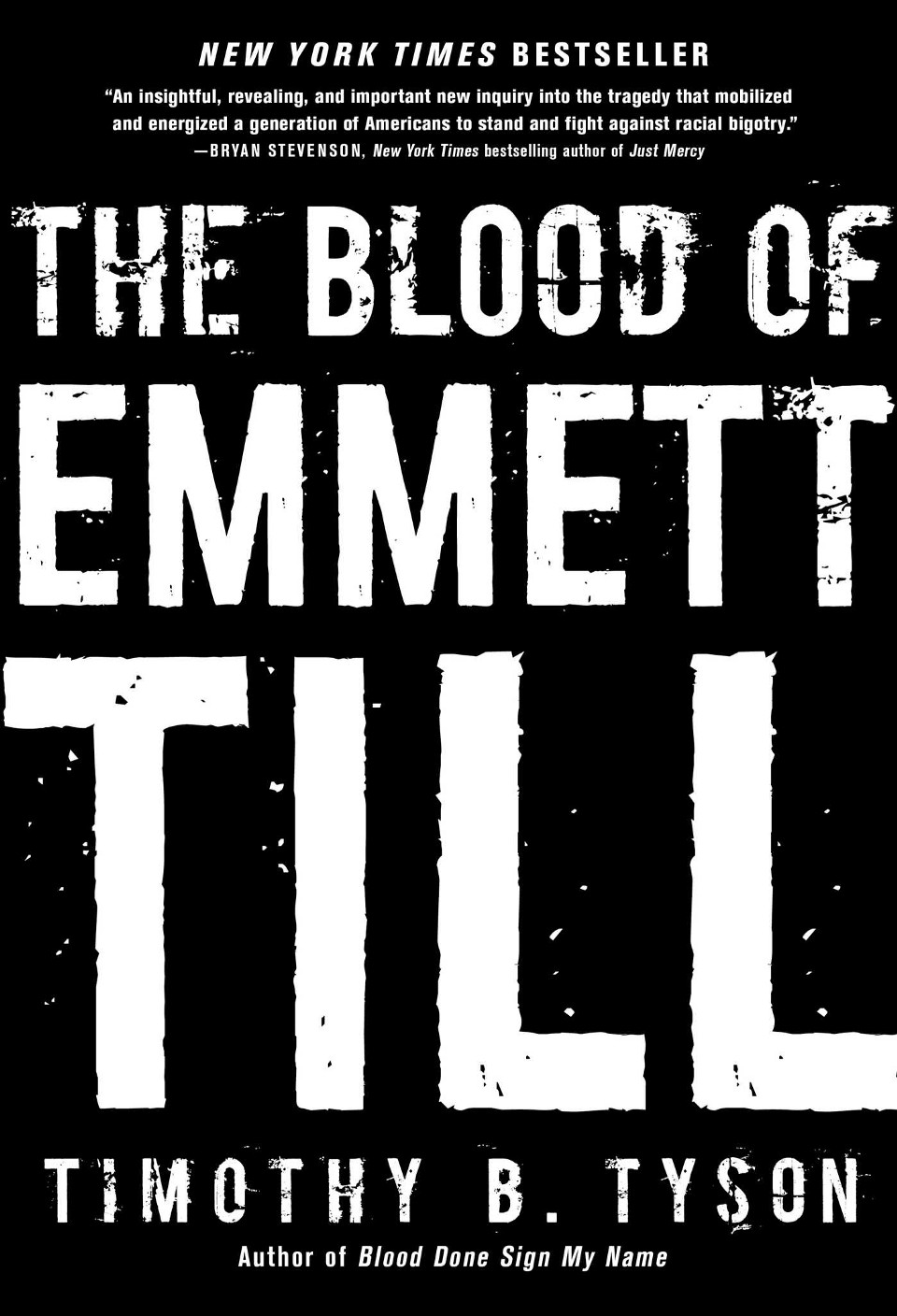When my parents sent my brother and me off to college in upstate South Carolina back in 2008, they gave us — their black, 18-year-old twin sons — a warning: Be careful around white women.
And why wouldn’t they say this? Their words were meant as a talisman, one that black parents have been passing to their black sons for centuries. It wasn’t long ago, after all, that the racial caste system known as Jim Crow punished, and often killed, black men who dared even to make eye contact with a white woman. Perhaps most notoriously, we saw this violence in the lynching and murder of Emmett Till, a 14-year-old black boy, in 1955.
In his book, The Blood of Emmett Till, historian Timothy B. Tyson returns to this episode, bringing a pivotal moment in American history into a 21st-century understanding. For most of us, Till exists only in death, as the broken body that galvanized a generation of mid-century civil rights activists. Here, though, and with granular detail, Tyson gives a welcome fullness to Till’s truncated life. We learn about the childhood of Till’s mother, Mamie Till-Mobley, in Webb, Mississippi, a place she described as being less of a town and more a clutter of stores “in search of a town,” and, later, after the Great Migration swept millions of black Americans out of the South, about what it meant to grow up black in Chicago in the 1940s and ’50s.
As Tyson writes: “Black youngsters who walked through neighborhoods other than their own did so at their peril.… These were lessons that black children growing up on the South Side learned with their ABCs.” We also learn about the deep bond between Till and his mother, the two of them “so much like brother and sister, like friends.” It isn’t until six chapters in that Tyson really starts to map out Till’s fatal summer in the Delta. “Under a barrage of pressure” from her son, Till’s mother had finally allowed him this sojourn to visit relatives — a sojourn that ended when a mob kidnapped, tortured, and murdered Till and threw his body into the Tallahatchie River. The mob was acting on the spurious accusation by Carolyn Bryant, a white woman, that Till had grabbed and sexually assaulted her. Tyson’s book concludes by considering Till’s legacy in the decades since his death.
The effect of Tyson’s zoomed-out approach is a devastating focus on the roots of oppressive systems operating today, and it makes clear that we’re the heirs of a hideous history.

It’s easy, Tyson says, to point the finger of blame for Till’s death at “some Southern white peckerwoods,” at the “redneck monsters” of the South. As Tyson explains: “We blame them to avoid seeing that the lynching of Emmett Till was caused by the nature and history of America itself and by a social system that has changed over the decades, but not as much as we pretend.” Tyson argues that the forces that killed Till — among them “not mere prejudice but the inbred fear of the Black Beast Rapist” as a threat to white womanhood — survive to the present day; indeed, they’ve been playing out in our culture ever since. We see them in everything from (re)segregated schools to lopsided incarceration rates to police brutality that scars black communities. In other words, while simpler minds take comfort in post-racial myths, racism has hardly disappeared — it’s merely been displaced.
Tyson draws the clearest line from past to present when he juxtaposes the “Emmett Till generation” of black Americans with the young black activists of today. The former category includes blacks who grew up in the ’50s — Joyce Ladner, Kareem Abdul-Jabbar, as well as my parents — and whose understanding of the relationship between their skin and their country was shaped, in no insignificant part, by the story of a boy mangled and murdered in Mississippi in 1955.
What’s equally insidious, Tyson notes, is that “America is still killing Emmett Till.” We saw it when Dylann Roof, a white supremacist, gunned down nine black churchgoers in Charleston, South Carolina, in 2015. “You rape our women and you’re taking over our country,” Roof said, conjuring, again, the bogeyman of rapacious black male sexuality. We saw it, too, with the fatal shooting of Michael Brown, an 18-year-old black man, in Ferguson, Missouri, the year before (an incident that, some three years later, continues to spark protest). A local grand jury’s decision to clear of criminal wrongdoing the white police officer responsible for shooting Brown only strengthened what was then a burgeoning Black Lives Matter movement. Tyson points to a protest at the White House after Brown’s death, where hundreds of people chanted, “How many black kids will you kill? Michael Brown, Emmett Till!” By weaving Till’s murder into ongoing demands for racial justice, today’s activists are stirring proof that Till continues to find life after death.
The Blood of Emmett Till is a fairly short book, only just north of 200 pages, in addition to 60 pages of notes and sources. All the more impressive, then, that it manages such a powerful sweep of history. Of similar importance is Tyson’s warning against complacency. With a tone at once measured and urgent, Tyson calls us to action, prods us to create a radically different future by making good on, and learning from, the past. Our racist history doesn’t always repeat in ways expected — in the form of “bludgeons and bullets,” Tyson writes — but it does offer patterns.
Will we see them?





